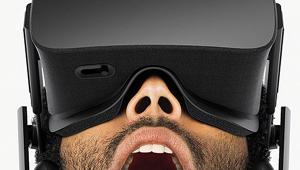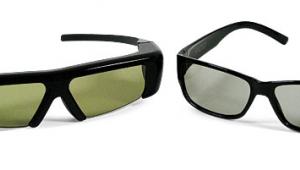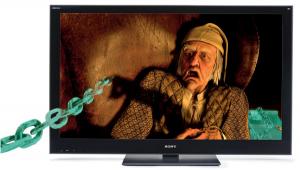Cool 3D news Scott. That is a bunch of bull that LG gets an award for being the first to make that kind of display when other companies have then in stores now! May be they bought LG technology or something? Who knows. Great 3D stuff tho!!
3D News from DisplayWeek 2010

The biggest 3D news—both figuratively and literally—came from LG Display, which supplies flat-panel modules to LG Electronics and other manufacturers, which incorporate them into finished products. At DisplayWeek 2010, the company introduced the world's largest 3D flat panel TV, measuring 84 inches diagonally. Not only that, its resolution is 3840x2160, four times that of conventional HDTV. The press release doesn't say if this behemoth uses passive or active glasses.
Another 3D demo by LG Display definitely uses passive polarized glasses. This 47-inch, 1080p 3D TV is said to reduce crosstalk—leakage of one eye's image to the other eye—below 1 percent, which should reduce eye strain. However, using polarization with a flat panel means that the resolution delivered to each eye is cut in half—in this case, the right-eye image is presented by the odd-numbered lines and the left-eye image is presented by the even-numbered lines, so the vertical resolution is half of what you see on a 2D display.
According to a SID press release, the 47-inch prototype won the organization's Display of the Year Gold Award as "the first commercially available TFT-LCD module for 3D televisions in the mid-40-inch range." Wait a second—how can that be? Samsung has 46-inch 3D LCD TVs in stores now, albeit with active-shutter glasses, and they don't use LG glass. Also, JVC showed a 46-inch 3D LCD TV using polarized-passive glasses at CEDIA last year, so how can the LG module be the first in the mid-40-inch range? Maybe it was developed before anything else in this size range, and maybe the JVC we saw last year uses the LG module, but this was not explained in the press release, and I was unable to reach anyone to clarify the point before I had to post this story.
At the show, LG Display is also demonstrating a 47-inch 3D LCD TV that uses a "liquid lens" to eliminate the need for glasses of any kind. Unfortunately, there were no more details in the press release.
Toshiba made a few 3D announcements at DisplayWeek 2010 as well. First, the company is demonstrating Time Sequential Twin-Eye technology on a 3-inch display with a resolution of 400x240. This approach uses Toshiba's OCB (Optically Compensated Bend) bi-directional lens sheet and left/right image switching to achieve a full-resolution 3D effect without glasses.
Also being demonstrated is Integral Imaging 3D, which is nothing more than a lenticular-lens approach that allows 3D images without glasses but cuts the resolution in half and requires viewers to be within narrow windows that repeat themselves at different viewing angles. The demo uses a 21-inch, 1280x800 display. This is old technology, so I don't know why the company is crowing about it.
Finally, Toshiba is showing a frame-sequential 3D display using OCB glasses on 15-inch (1280x800) and 32-inch (1366x768) screens. This approach is not effectively different than the 3D TVs that are now commercially available, so again, what's the big deal?
- Log in or register to post comments

























































